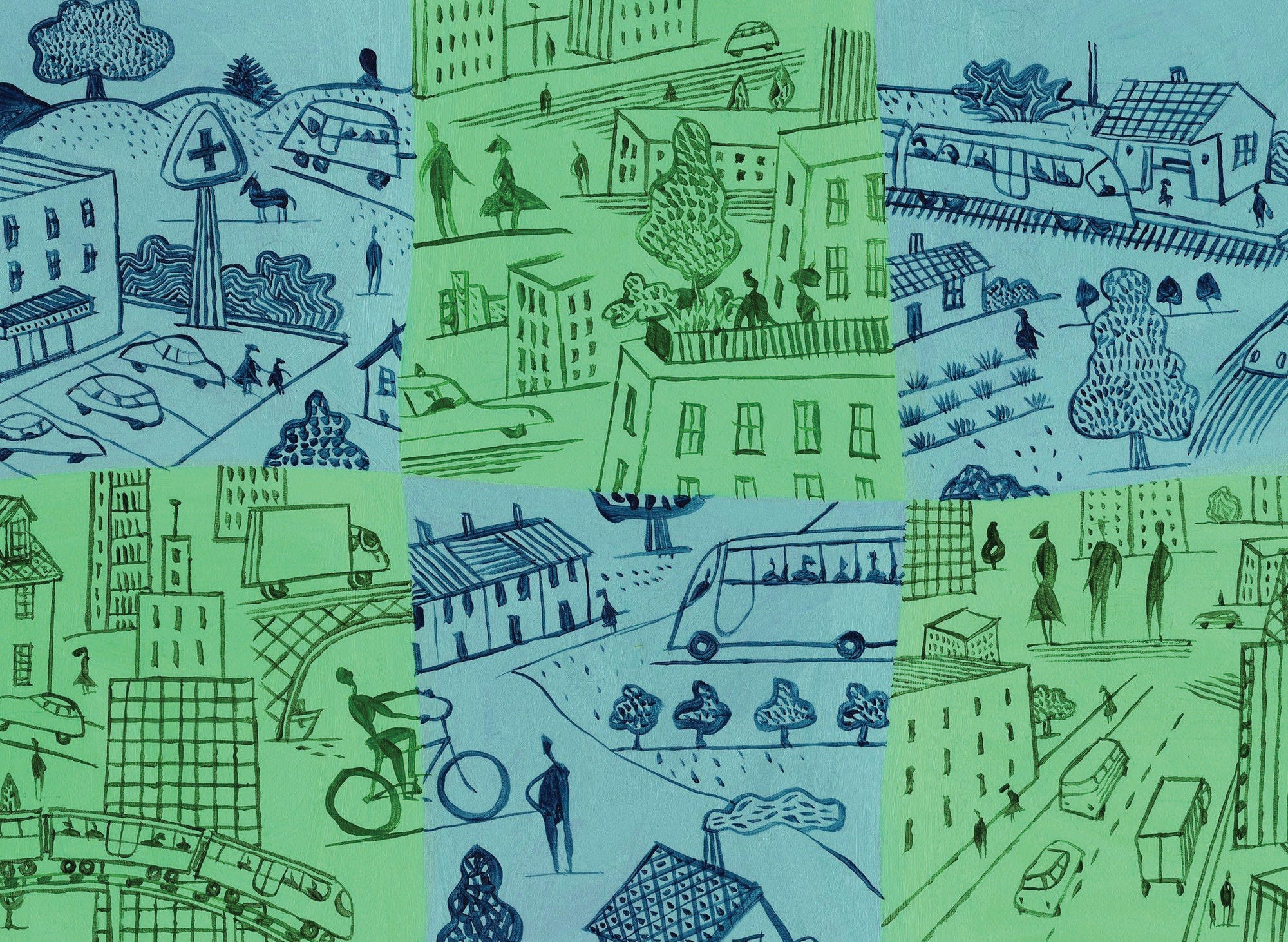Across the world, high-income countries have the highest shares of people in cities and their commuting zones but that proportion is growing faster in poorer countries.
An increasing share of the world’s population lives in cities and their commuting zones (FUAs). Between 1975 and 2015, the population living in FUAs increased from 2.1 billion (or 51.5% of the world population) to 4.9 billion (53.7%) (Figure 4.7). FUAs with a population above 5 million experienced the fastest growth. Based on elaborations on global population projections made by the European Union (EU) (Jones et al, forthcoming), these large FUAs are projected to continue to grow by 180% over the next 30 years, mostly driven by low-income countries, which are experiencing fast population growth. According to such projections, the population will increase in cities of all sizes globally but growth in small FUAs will occur at a slower pace. The population of FUAs between 50 000 and 250 000 inhabitants is expected to remain practically stable but the population of those between 1 and 5 million inhabitants is projected to grow by around 46% over the next 3 decades, reaching 1.5 billion by 2050.
The share of people living in cities and their commuting zones changes significantly across income levels, being significantly larger in high-income countries, compared to other income groups. While 71% of the population in high-income countries live in FUAs, this rate drops to 34% in low-income countries (Figure 4.8). The average city size varies depending on the income level of the country. When moving from high- to low-income countries (i.e. from the left to the right of Figure 4.8), the population share in FUAs between 250 000 and 1 million inhabitants halves (from 17% to 8%). In contrast, the average share of people living in FUAs with less than 250 000 people increases from 7% to 11%.
Many countries have experienced sizeable shifts in the geographic distribution of their population in the past decades, in particular less urbanised countries, where many towns transformed into cities and metropolitan areas. Between 2000 and 2015, the total world population living in FUAs has increased by 1.3% per year (21% over the whole period). Low-income countries experienced the fastest growth of cities and their commuting zones, in those countries, the population has increased by 3% per year (or about 55% across the period), while OECD countries grew by 0.83% per year (13.2% over the whole period) (Figure 4.9). During the same period, cities and their commuting zones grew fastest in Sub-Saharan Africa by 3% annually (or about 52% across the period), reflecting both the general high population growth in that region and growing urbanisation. On the other hand, the slowest growth was observed in Central Asia and Europe, where the total FUA population increased by 0.55% per year (or 8% over the whole period).
While FUAs have been growing faster than other places in OECD countries, around one in five FUAs has been shrinking since 2000. Population decline in FUAs was particularly pronounced in Latvia and Lithuania, where all FUAs lost population. In countries, such as Hungary, Japan, Korea and Slovenia, about half of all FUAs have recorded population loss since 2000 (Figure 4.10 to Figure 4.12). The “shrinking cities” phenomenon brings unprecedented challenges to policymakers and it is projected to become even more pressing in the coming decades. According to recent estimations ( Jones, B. et al), 35% of all FUAs (20% in OECD FUAs) is expected to experience population decline between 2020 and 2050.







